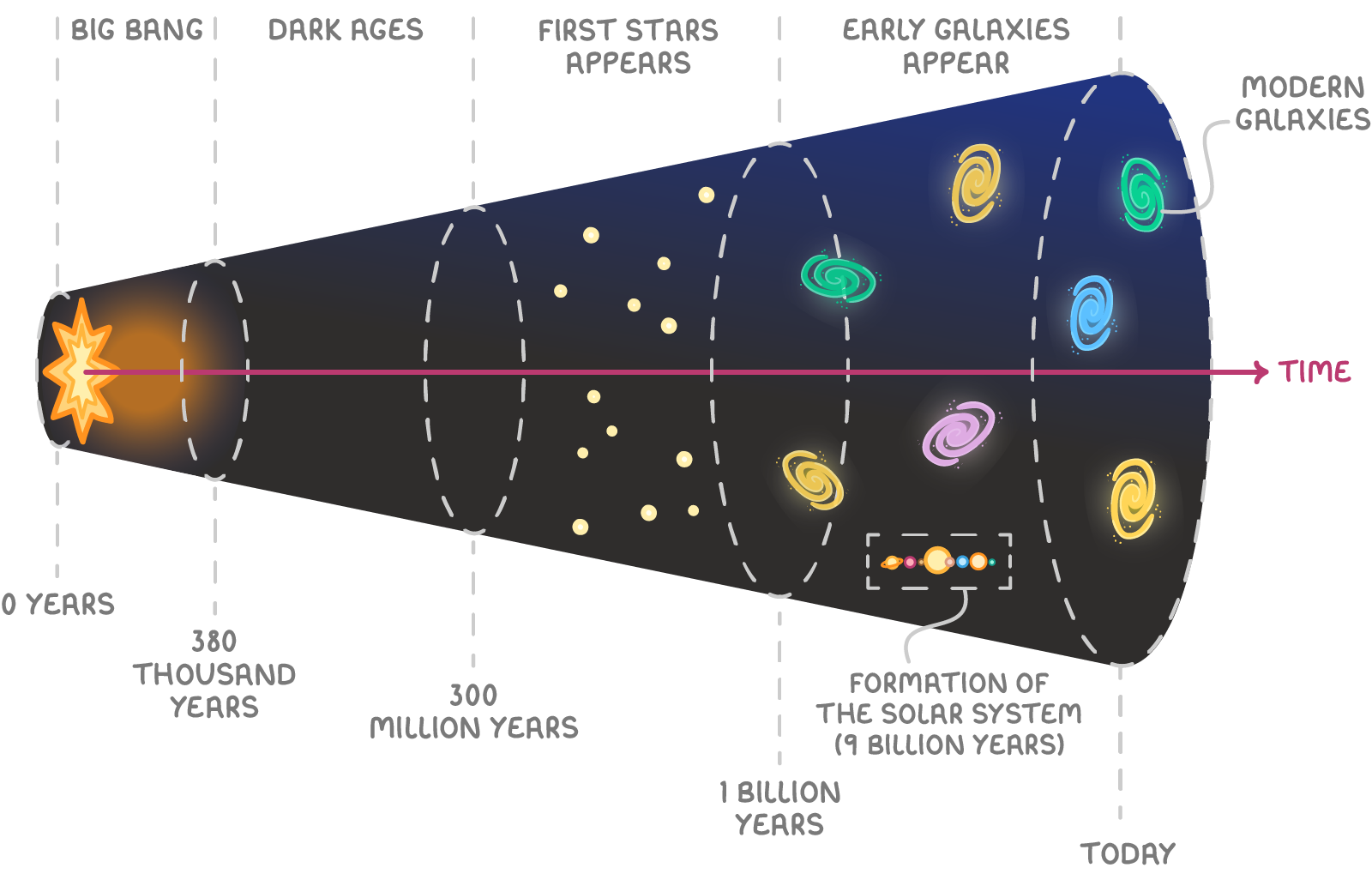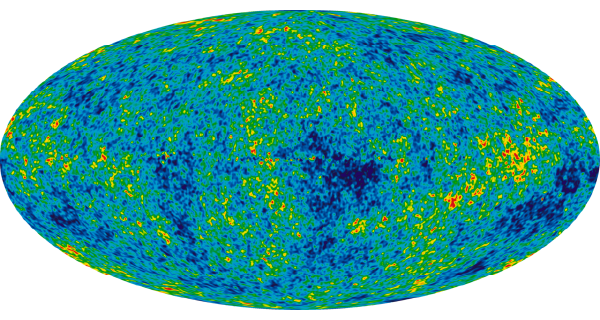The Big Bang Theory
This lesson covers:
- The support the observed expansion of the universe provides for the Big Bang theory.
- The definitions of key concepts such as spacetime, cosmic inflation, and the cosmological principle.
- The significance of the discovery of cosmic microwave background radiation.
- How tiny temperature fluctuations in the CMBR acted as the seeds for the formation of galaxies.
- The role of the Great Attractor in the motion of the Milky Way.
Expansion of the universe points to a hot big bang origin
Observations from astronomy make it clear that the universe is expanding. If we imagine running this expansion in reverse, we reach a state where the early universe was incredibly hot and dense. This idea forms the basis of the Big Bang theory:
- Initially, the universe was a singularity, where all of its mass and energy were concentrated at a single point, characterised by infinite temperature and density.
- With the Big Bang, which occurred at time zero (t = 0), both space and time came into being, and the universe began its expansion, growing larger and cooler over time.

Defining spacetime, cosmic inflation, and the cosmological principle
Spacetime is a concept that combines the three dimensions of space with the dimension of time into a single four-dimensional continuum. This framework began with the Big Bang and has been developing ever since.
Immediately after the Big Bang, the universe experienced a brief period of very rapid expansion known as cosmic inflation. This expansion spread matter uniformly across the cosmos.
The cosmological principle proposes that, on a large scale, the universe is homogeneous and isotropic when averaged over a sufficient time span. This principle explains why the universe appears similar in all directions, a feature that cosmic inflation helps to justify.
Cosmic microwave background radiation discovered
Big Bang cosmology predicts the existence of relic radiation, thermal energy left over from the universe's hot, dense early state.
As the universe expanded, this radiation's wavelengths stretched out, moving from the gamma spectrum into the microwave region.
In the 1960s, the accidental discovery by Penzias and Wilson of a uniform microwave radiation at 2.7 K across the sky provided compelling evidence of the Big Bang. This cosmic microwave background radiation (CMBR) is a cornerstone of modern cosmology.
The CMBR and its tiny temperature fluctuations
Further investigations into the CMBR, such as those by the COBE satellite, have revealed:
- The CMBR's spectrum matches that of a perfect black body.
- There are minuscule temperature variations within the CMBR, which were at the very limit of detection capabilities.
These variations correspond to density fluctuations in the early universe, which facilitated the gravitational collapse that led to the formation of galaxies.
Additionally, the CMBR exhibits a Doppler shift that indicates the Milky Way is moving rapidly towards a massive gravitational anomaly known as the Great Attractor.
